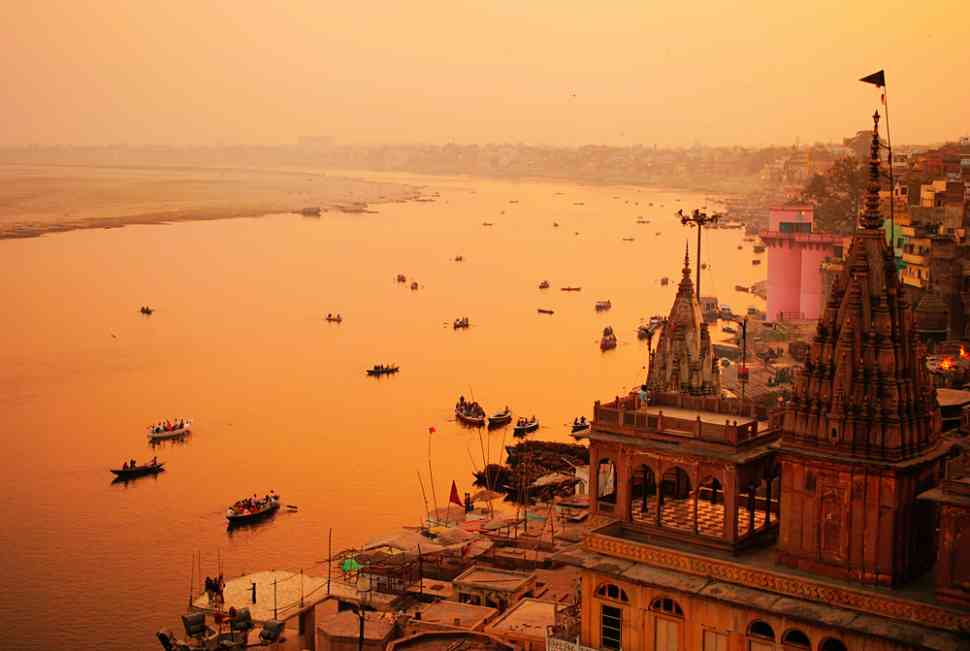Discover Some Of The World’s Oldest Places

Are you in the mood to look at the world’s oldest places? Just read the information below.
Varanasi- India
Varanasi, India’s spiritual center, is lined by 2,000 temples. This bustling setting on the banks of the River Ganges is one of the oldest continuously inhabited places you may visit. It is one of the Hindus’ seven sacred towns. Adi Shankara is the person who established Shiva worship as an official Varanasi sect in the 8th century.
In the Middle Ages, during the Muslim administration, the city grew in importance as a center of Hindu devotion, pilgrimage, mysticism, and poetry, adding to its cultural significance. Many Hindus flock here each year to die, as it is believed that this is where the cycle of rebirth stops. Although many people are burned, and their ashes are thrown into the river, those who are considered holy are dumped in the river with a rock.
Giza Pyramid Complex – Egypt
The Giza Pyramids in Egypt are the final remaining Ancient World Wonder. The remarkable geometrical constructions were built between 2550 and 2490 BC at the request of the Pharaohs during the Golden Age of the 4th Dynasty. The Pharaohs demanded that the pyramids must be built in order for them to have a smoother journey into the afterlife.
The Egyptians believed that body preservation could lead to eternal life and that acquiring goods like jewelry could enable them to maintain their rulership even after death. Cheops, Chephren, and Mycerinus are the most historically significant of the 130 pyramids dispersed over ancient Egypt. The Great Pyramid was constructed from 2 million blocks. While the exact construction method is unknown, it is thought that 100,000 workers were required to erect these massive constructions.
Göbekli Tepe – Turkey
The Neolithic archaeological ruins, widely considered to have been created about 12,000 years ago, predating Stonehenge by 6,000 years, are thought to have been built near the end of the last Ice Age. In the 1960s, the site was incorrectly identified as an old burial cemetery. In 1994, however, German archaeologist Klaus Schmidt decided to reconsider.
The relic in Turkey features massive carved stones that have been maintained thanks to site backfilling, which compresses the dirt around each pillar to avoid deterioration. Although many of the pillars are basic, several are artistically adorned with sculptures of animals like lions, foxes, and vultures. The biggest ruins rise 16 feet tall and weigh between 7 and 10 tonnes.
Murujuga (Burrup Peninsula) – Western Australia
The Damper Archipelago, part of Murujuga National Park, is home to the world’s oldest collection of rock sculptures. The petroglyphs are historically significant because they capture the history of the Aboriginals. These people have lived in Australia for over 50,000 years, with these petroglyphs dating back to roughly 40,000 years. This collection of stacked stones, similar to Stonehenge, is thought to have been placed on the peninsula by the Yaburara people. This group resided in the archipelago until their slaughter in the 19th century.
The Dampier Rock Art Precinct is thought to have between 300,000 and 1,000,000 pictures depicting 40,000 years of history. Between 1963 and 2006, it was claimed that 24.4% of Murujuga’s rock art was destroyed to make space for industrial expansion. However, in response to a question in parliament, the Western Australian government argued for a far lower percentage, claiming that approximately 4% of sites, or 7.2% of petroglyphs, have been destroyed since 1972.
Athens – Greece
With a population of 5,000 years, Athens is one of the world’s oldest cities. There’s also much to see and do, from touring the Parthenon, Greece’s most famous temple, to strolling through the Ancient Cemetry of Kerameikos with its unique architecture.
Lisbon – Portugal
Lisbon is rich in culture, community, color, history, and mystery. In its early years, Lisbon was occupied by the Phoenicians, Greeks, Carthaginians, and Romans, making it a diversified capital. Under the Phoenicians’ reign, the city began as a trading post known as Olisipo, which translates to “delightful small post.” The Romans conquered Lisbon in 105 BC, and Julius Caesar declared it a municipium.
Have you read?
Recover Productivity by Rediscovering How Work Gets Done by Dr. André Martin.
Better Together by Leo Bottary.
Leadership Lessons from Fatherhood: 7 Key Behaviors to Adopt by Robin Landa.
Openly LGBTQ CEOs at the helm of major global companies.
The value of small talk as a powerful empathy tool by Vanessa Vershaw.
Add CEOWORLD magazine to your Google News feed.
Follow CEOWORLD magazine headlines on: Google News, LinkedIn, Twitter, and Facebook.
This report/news/ranking/statistics has been prepared only for general guidance on matters of interest and does not constitute professional advice. You should not act upon the information contained in this publication without obtaining specific professional advice. No representation or warranty (express or implied) is given as to the accuracy or completeness of the information contained in this publication, and, to the extent permitted by law, CEOWORLD magazine does not accept or assume any liability, responsibility or duty of care for any consequences of you or anyone else acting, or refraining to act, in reliance on the information contained in this publication or for any decision based on it.
Copyright 2024 The CEOWORLD magazine. All rights reserved. This material (and any extract from it) must not be copied, redistributed or placed on any website, without CEOWORLD magazine' prior written consent. For media queries, please contact: info@ceoworld.biz
SUBSCRIBE NEWSLETTER








